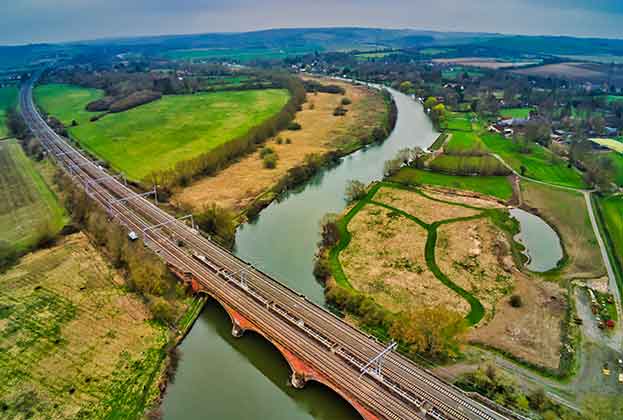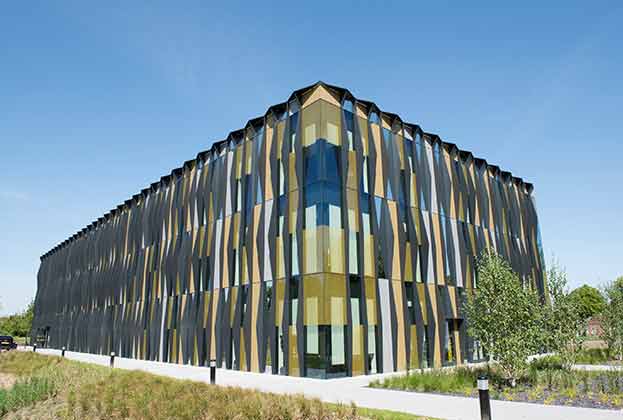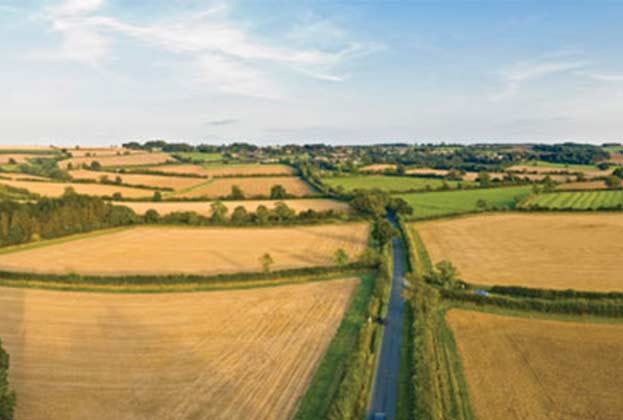How is the necessary housing to support growth going to be delivered?
Across the Oxford-Cambridge arc, annual housing need is currently assessed at 18,000 homes. The majority (53%) of this is concentrated in just nine local authorities; Milton Keynes, Northampton, Cherwell, Vale of White Horse, South Cambridgeshire, Peterborough, Bedford, Huntingdonshire and Aylesbury Vale.
Only four of these nine local authorities are currently meeting their need; Vale of White Horse, Central Bedfordshire, Aylesbury Vale and Cherwell. The others are all falling short, with Oxford, Northampton and Milton Keynes having the largest shortfalls across the entire corridor.
Building new homes is an important step towards alleviating affordability constraints, which hamper economic growth by pricing out workers, and ultimately reduce the attractiveness of an area for occupiers if they believe they will struggle to recruit. In Cambridge and Oxford, homes are 13 and 11 times greater than workplace-based earnings respectively.
The more affordable cities of Milton Keynes, Northampton, and Bedford still have house price to earnings ratios of over 8, well above the national average. This highlights the need for the proposed infrastructure improvement to unlock new areas that can support the region’s growth potential.
Are we on track for a million homes by 2050?
The UK Government’s ambition is for 1 million new homes to be built across the arc by 2050. However, if delivery was to remain at present levels over the next 30 years, only 630,000 homes built.
If the government’s ambition is to be reached, housebuilding needs to rise by 13,000 homes annually. This equates to an additional 47% of the current delivery level and would mean building at a rate of 3.1% of the corridor’s 2018 stock every year; a level not currently being achieved anywhere in England.
One of the challenges facing some parts of the corridor is the green belt; particularly around Oxford, Cambridge and the southern fringe near Luton and High Wycombe. The restrictions caused by this mean that there is an increasing need for coordinated approaches across neighbouring districts to provide housing for growing workforces in these areas.
The greatest potential for development is likely to be in the middle of the arc, where land is less constrained, and the intersections of new and old infrastructure will have the greatest impact on connectivity. These areas already have the highest forecast household growth, and have the most capacity for accommodating growth beyond this baseline.
These are also the more affordable markets with land values that are more able to support the diversity of mix and tenure needed to enable the high rates of absorption needed to build homes at 3% of existing stock.
We have identified a pipeline of 320,000 homes on major sites across the arc, of which almost 20,000 homes are currently under construction. Much of this pipeline is long term strategic land; 140,000 homes are on sites that have been allocated in a local plan, and a further 35,000 homes are on sites at a draft allocation stage. But there is still a significant requirement for more land, particularly for sites that will come forward beyond 2030.
To meet the ambition of delivering 1 million homes by 2050, land with capacity for 680,000 homes needs to be identified. Based on the typical current density for development in the arc, this is equivalent to over 23,000 hectares. However, improving infrastructure will enable development at higher densities.
The government has announced four new garden villages within the corridor; in South Oxfordshire, Vale of White Horse, West Oxfordshire and Central Bedfordshire. While these will support delivery, at only 10,500 homes they are not the silver bullet to increasing delivery to the required level.
The NIC has suggested a further four areas for potential new settlements, between Bicester and Bletchley, at Marston Vale, at Sandy and between Sandy and Cambridge. However, the specific capacity of these areas to support new development will be dependent on the final routes of East West Rail and the Expressway.
Meeting need across tenure and price point
To deliver 1 million homes by 2050, innovative approaches will be needed to enable high levels of market absorption. Across the arc, there were 55,000 residential transactions in the year to March 2019, of which 17% were new build. This compares to the national average of new build comprising 14% of all transactions, and suggests that if housing delivery is to increase in the arc, open market capacity to absorb new homes will be limited. Instead, developers will need to provide a range of tenures.
This problem is particularly acute in both Oxford and Cambridge; in these locations, the proportion of the population able to access home ownership is so limited that the private rented sector now accounts for over 30% of all households. This is in comparison to an average of 18% across the whole arc.
In these cities, it will be very challenging to build homes for open market sale at the price point they are needed; while the professional, scientific and tech sector is projected to grow significantly, it will still only be a proportion of overall employment, and new housing will have to accommodate workers on a wide range of incomes.
There are two possible solutions. The first is for city local authorities to continue to work with more affordable surrounding areas to accommodate their overspill of need.
This is already starting to emerge through the Oxfordshire Housing Deal, but without an overarching strategic body responsible for enforcing this co-operation, these agreements will always be at risk of changing local politics. City region strategic planning needs to be in place across the arc if the full enabling potential of the new infrastructure is to be realised.
Secondly, there may be more schemes to deliver homes for specific needs and across a range of tenures such as the recently announced partnership between L&G and Oxford University which will provide discounted homes for university staff on university land alongside homes for general sale.
Read the articles within The Oxford-Cambridge Innovation Arc below.


.jpg)



.jpg)

